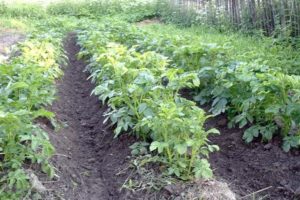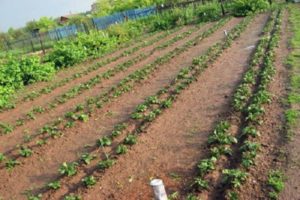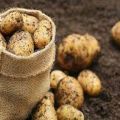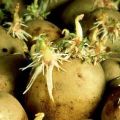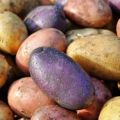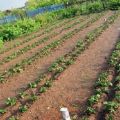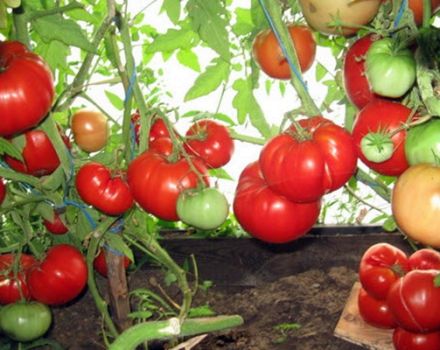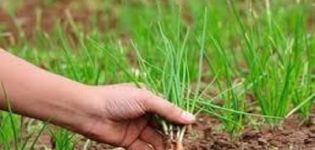Description of the Colette potato variety, its characteristics and yield
If you need to get an early potato or two crops per season, Colette potatoes are better suited for this purpose than other varieties. It was bred jointly by Russian and German breeders for making French fries and is a table variety. Suitable for growing in the Central and North Caucasus regions. The entry about the variety in the State Register of Plants for Growing in the Russian Federation was made in 2002.
Description of culture
Colette is an early ripe potato variety, 45 days pass from planting tubers in the ground to getting ripe potatoes. During this period, the new potatoes... When harvesting, 85 days pass during the drying period. The yield is high - if harvested after 45 days, you get 110-150 centners per hectare. When harvesting on the 55th day after planting - 150–270 centners per hectare. The largest harvest of this variety was recorded in the Rostov region - 290 centners.
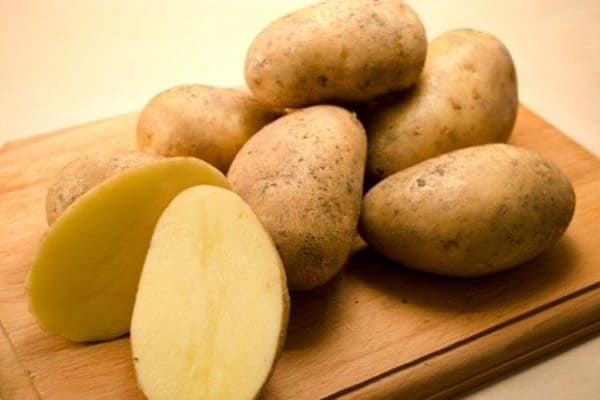
Plants of the variety are semi-spreading, leaves are green, slightly corrugated along the edges. Plants are resistant to potato crayfish and nematode. Late blight infects leaves and tubers, but early ripening helps to avoid crop losses. The plant blooms with lilac flowers.
Description of the variety - the fruits ripen together, therefore, when harvested, all tubers are of the same size. The color of the peel is yellow, the flesh is also yellow-cream. There are few eyes on the surface. The juicy pulp of potatoes contains a small amount of starch - only 12-15%.
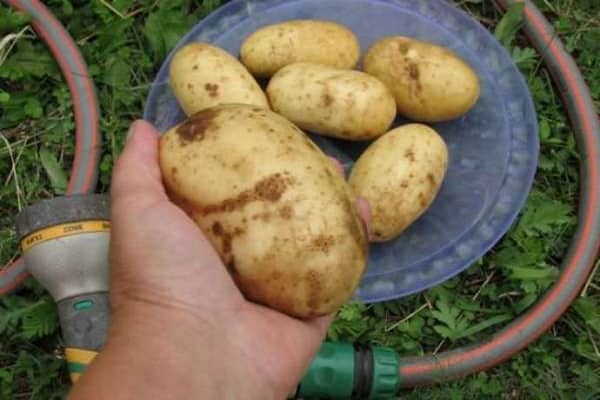
The shape of the potato is oval, slightly elongated, there are barely noticeable brown spots on the yellow surface. Tuber weight reaches 130 grams. The variety has excellent taste. It is successfully grown for wholesale and large-scale wholesale within the country and abroad.
The positive qualities of Colette potatoes
Since 2002, this variety has been grown in Russia, and during this time, gardeners have identified the following positive qualities:
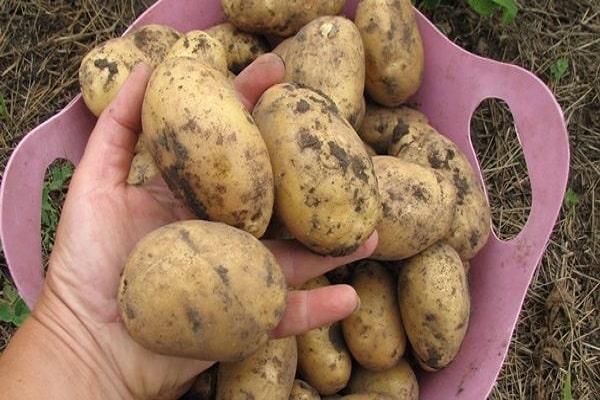
- high yield;
- early fruiting;
- excellent taste;
- disease resistance;
- friendly fruiting and ripening of tubers;
- the ability to collect two crops per season;
- smooth and beautiful tubers;
- tends to be stored for a long time without loss in quality.
There is also one drawback, the tubers ripen quickly and the potatoes give a high yield on fertile soils with constant watering.

Growing potatoes
To get a good harvest of potatoes, you need to choose fertile soil on the site. Characteristics of the soil - light loamy or sandy loamy soils are suitable for planting.
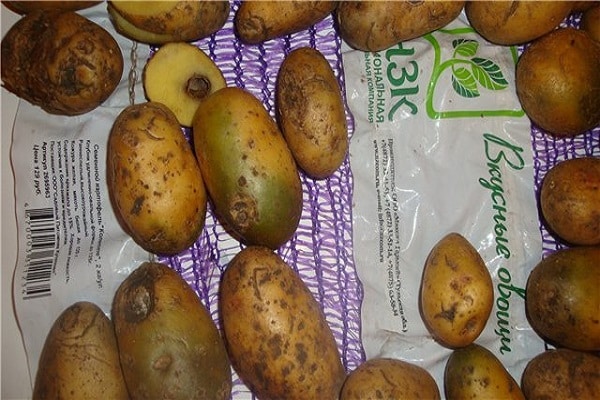
Preparing the soil for planting
Prepare the soil for planting in the fall. Before plowing the site, cow dung or compost is introduced into it. After removing the weeds and fertilizing, the field is plowed and left to rest until spring. In the spring, before planting, the soil is plowed again and furrows are cut under planting potatoes.
This variety gives a good yield when planted in an area that previously grew legumes, annual grasses and flax. You can plant potatoes with beans, such a neighborhood will not negatively affect the harvest, but, on the contrary, will improve it.

Achene preparation
Some gardeners germinate the achenes tubers to get an early harvest before planting. This will speed up the emergence of tops and the setting of young tubers.
In order not to waste time, you need to select fertile tubers from the achene. They should weigh about 80 grams, even and free from decay. The larger tubers are cut in half.
Sprout potatoes before planting in a damp room. This can be achieved by simply placing the potatoes in a warm but dark room.
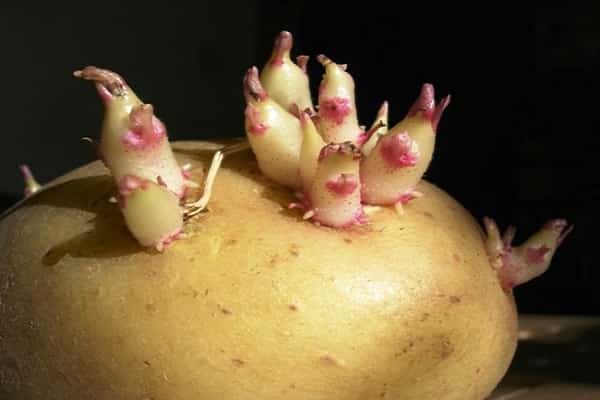
There is another way of sprouting: the tubers are placed in wooden boxes in a damp room, the layers are sprinkled with a mixture of earth and sawdust, hay or grass can be used. Sprinkle the boxes with water and cover with foil until germination. Then the film is removed and continued to grow until planting in the ground.
Landing
The planting of the Colette potato variety according to the description is carried out depending on the weather conditions of the region from mid to late May - early June. The air should warm up to 24 degrees, the ground up to 15 degrees. Potatoes are planted in loose and slightly moist soil. There are three ways to plant potatoes:
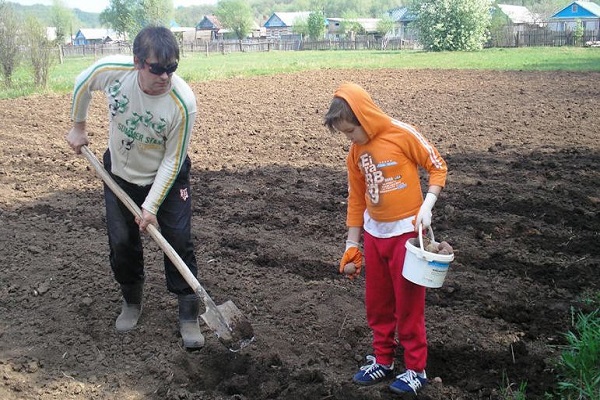
- smooth;
- trench;
- comb.
The planting method depends on the characteristics of the site - the level of groundwater and the humidity of the region. If there is always water on the site, then you need to plant the tubers using the ridge method, and if the site is overcome by constant droughts, then the trench or smooth method is chosen. The distance between the seeds is chosen depending on the size. So, a small achene is planted at a distance of 30 by 70 centimeters, the planting depth is 10 centimeters. After planting, it is necessary to take care of the plants to obtain a rich harvest.

Potato care
Caring for the beds is simple and consists in:
- weeding;
- loosening;
- watering;
- protection from pests.
Watering should be done at least once a week in dry weather. If it rains once or twice a week, then the field does not need to be watered.
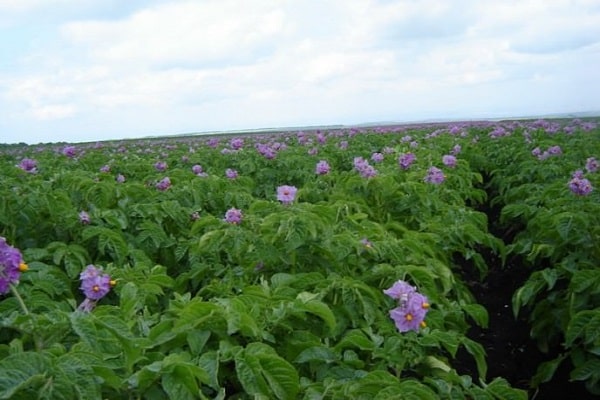
Weeding is carried out during the entire growth of the fruit, otherwise the field will overgrow with grass and the tubers will not grow. In this case, the plants are spud so that the tubers do not appear above the ground when ripe. You should be aware that in hardened soil, vegetables do not develop well, and nutrients go to weeds, not giving food to the planted plants.
Pest control, mainly the Colorado potato beetle, is carried out throughout the growing season of the tops. Only after flowering and drying the beetle is not dangerous for the future harvest.
There are many chemicals on the market to protect potatoes from the Colorado potato beetle. Also, some gardeners use the old plant-safe method: picking beetles by hand. In this case, you need to raise the leaves and pluck those on which the yellow insect eggs are laid. If the field is treated with chemicals, then the last treatment should be carried out no later than two weeks before harvest, otherwise the tubers will be infected.
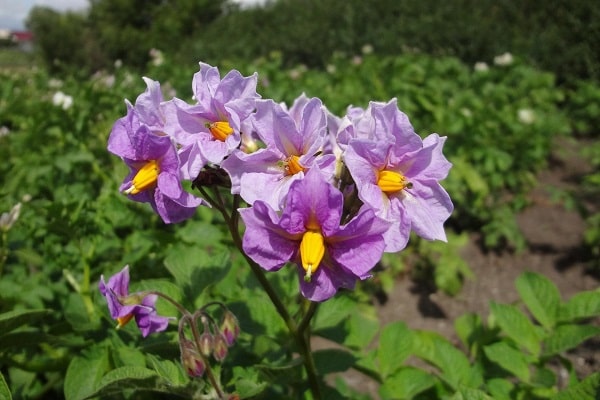
Harvesting and storage
Harvesting is carried out according to the following indicators:
- with faded stems;
- lodged and semi-dried tops;
- depending on the size of the tubers.
Harvesting is carried out in sunny weather, after digging up the crop is dried in the sun and sorted out.Rotten and cut tubers are laid aside, and whole tubers are stored in winter. Only dry crops are laid for storage. It should also be inspected during the winter. One rotten potato can ruin the entire crop.
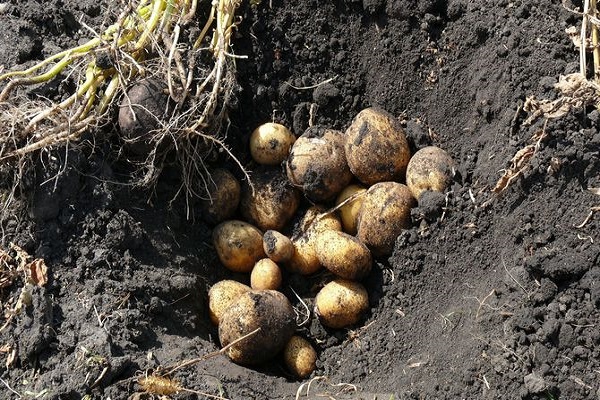
Review overview
This variety has been grown in Russia since 2002, so it has already received numerous reviews from amateur gardeners and professionals in the agricultural business. Let's take a look at some of them:
Grigory Vladimirovich writes: “A neighbor described the potato of the Colette variety and suggested a half bag of achenes of the variety for growing. I planted, the tubers grew beautiful, even, the potatoes are delicious when boiled and fried, they have a sweetish taste. Does not boil over. She grew up in a garden bed, never watered in the summer, you just need to break through the grass so as not to drown out the plants and destroy the beetle. This variety does not require anything else from care. The harvest was good, from half a bag of achenes 5 bags of vegetable came out. I will plant this variety again next year ”.

